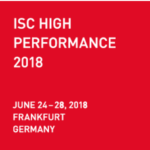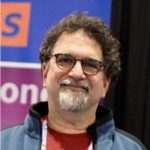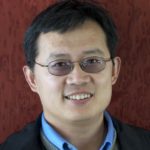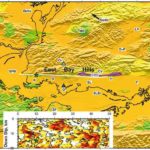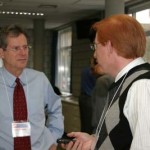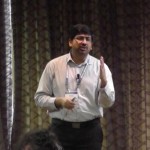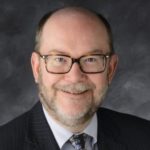Today ISC 2018 announced that the conference will host whopping 23 HPC & AI workshops this year. Registration is now open for the conference, which takes place June 24-28 in Frankfurt, Germany. “Chaired by John Shalf from LBNL, the goal of workshops is to provide attendees with a focused and in-depth platform for presentations, discussion and interaction in a particular subject area.”
Jon Bashor Retires After 27 Years of Service to National Labs
LBNL Communications Manager Jon Bashor has announced his retirement after 27 years with the national lab system. “As communications manager, Jon has been key to the visibility of Berkeley Lab’s computing program, both through written articles and other material produced by Jon and his team and his community leadership—including several years of organizing the DOE booth at SC, the annual supercomputing conference,” said Associate Lab Director Kathy Yelick.
Let’s Talk Exascale: Developing Low Overhead Communication Libraries
In this episode of Let’s Talk Exascale, Scott Baden of LBNL describes the Pagoda Project, which seeks to develop a lightweight communication and global address space support for exascale applications. “What our project is addressing is how to keep the fixed cost as small as possible, so that cutting-edge irregular algorithms can efficiently move many small pieces of data efficiently.”
High Speed Connection to Hyades Supercomputer wins CENIC Innovation Award
The project connecting the UC Santa Cruz’s Hyades supercomputer to LBNL is being awarded the CENIC 2018 Innovations in Networking Award for Research Applications. “To accelerate the rate of scientific discovery, researchers must get the data they need, where they need it, and when they need it,” said UC San Diego computer science and engineering professor Larry Smarr, Principal Investigator of the PRP and director of Calit2. “This requires a high-performance data freeway system in which we use optical lightpaths to connect data generators and users of that data.”
SpaRC: Scalable Sequence Clustering using Apache Spark
Zhong Wang from the Genome Institute at LBNL gave this talk at the Stanford HPC Conference. “Whole genome shotgun based next generation transcriptomics and metagenomics studies often generate 100 to 1000 gigabytes (GB) sequence data derived from tens of thousands of different genes or microbial species. Here we describe an Apache Spark-based scalable sequence clustering application, SparkReadClust (SpaRC) that partitions reads based on their molecule of origin to enable downstream assembly optimization.”
Hayward Fault Earthquake Simulations Increase Fidelity of Ground Motions
Researchers at LLNL are using supercomputers to simulate the onset of earthquakes in California. “This study shows that powerful supercomputing can be used to calculate earthquake shaking on a large, regional scale with more realism than we’ve ever been able to produce before,” said Artie Rodgers, LLNL seismologist and lead author of the paper.”
Agenda Posted for April HPC User Forum in Tucson
The HPC User Forum has posted their speaker agenda for their upcoming meeting in Tucson. Hosted by Hyperion Research, the event takes place April 16-18 at Loews Ventana Canyon. “The April meeting will explore the status and prospects for quantum computing and HPC use of HPC for environmental research, especially natural disasters such as earthquakes and the recent California wildfires. As always, the meeting will also look at new developments in HPDA-AI, cloud computing and other areas of continuing interest to the HPC community. A special session will look at the growing field of processors and accelerators supporting HPC systems.”
Video: Deep Learning for Science
Prabhat from NERSC and Michael F. Wehner from LBNL gave this talk at the Intel HPC Developer Conference in Denver. “Deep Learning has revolutionized the fields of computer vision, speech recognition and control systems. Can Deep Learning (DL) work for scientific problems? This talk will explore a variety of Lawrence Berkeley National Laboratory’s applications that are currently benefiting from DL.”
Supercomputing How First Supernovae Altered Early Star Formation
Over at LBNL, Kathy Kincade writes that cosmologists are using supercomputers to study how heavy metals expelled from exploding supernovae helped the first stars in the universe regulate subsequent star formation. “In the early universe, the stars were massive and the radiation they emitted was very strong,” Chen explained. “So if you have this radiation before that star explodes and becomes a supernova, the radiation has already caused significant damage to the gas surrounding the star’s halo.”
SC17 Panel: Energy Efficiency Gains From Software
In this video from SC17 in Denver, Dan Reed moderates a panel discussion on HPC Software for Energy Efficiency. “This panel will explore what HPC software capabilities were most helpful over the past years in improving HPC system energy efficiency? It will then look forward; asking in what layers of the software stack should a priority be put on introducing energy-awareness; e.g., runtime, scheduling, applications? What is needed moving forward? Who is responsible for that forward momentum?”

